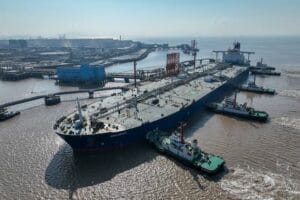Australia unveils ambitious Naval expansion amidst regional tensions

Australia revealed an extensive blueprint on Tuesday aimed at bolstering its naval capabilities over the next decade, in a move to double its fleet of major warships and amplify defense expenditure by an additional US$7 billion.
The plan, articulated by Defence Minister Richard Marles, envisages an augmentation of Australia’s navy to 26 major surface combatant ships, a historic high since the conclusion of World War II.
This decision comes amidst a backdrop of escalating militarization in the Asia-Pacific region, fueled by an arms race notably accelerated by the formidable build-up of military power by China and Russia. Moreover, it reflects growing apprehension among US-led allies regarding the assertive stance of authoritarian regimes, fostering an environment of heightened geopolitical tension.
The comprehensive strategy entails the acquisition of six Hunter class frigates, 11 general-purpose frigates, three air warfare destroyers, and six cutting-edge surface warships featuring unmanned technology. Notably, a portion of the fleet will be equipped with Tomahawk missiles, augmenting Australia’s deterrence capabilities with the capacity for long-range precision strikes.
Australia aims to bolster its defense spending to 2.4 percent of gross domestic product, surpassing the two percent threshold endorsed by NATO allies. While the construction of some vessels will generate over 3,000 jobs in Adelaide, procurement plans also include collaborations with international partners such as the United States and potential designs from Spain, Germany, South Korea, or Japan.
However, skepticism looms over the feasibility and efficacy of the ambitious endeavor. Historically, Australia’s defense projects have been plagued by budget overruns, policy reversals, and logistical challenges, often prioritizing local economic interests over strategic imperatives. Analysts, including Michael Shoebridge, advocate for a streamlined procurement process to avert familiar pitfalls and ensure timely deployment of vessels equipped to navigate evolving threats and technological advancements.
The imperative, according to Shoebridge, lies in prioritizing the revitalization of Australia’s naval fleet over political expediency, cautioning against the temptation to prioritize electoral appeasement over strategic imperatives. As regional dynamics continue to evolve, Australia confronts the critical task of fortifying its maritime capabilities to safeguard its national interests amidst an increasingly uncertain geopolitical landscape.












